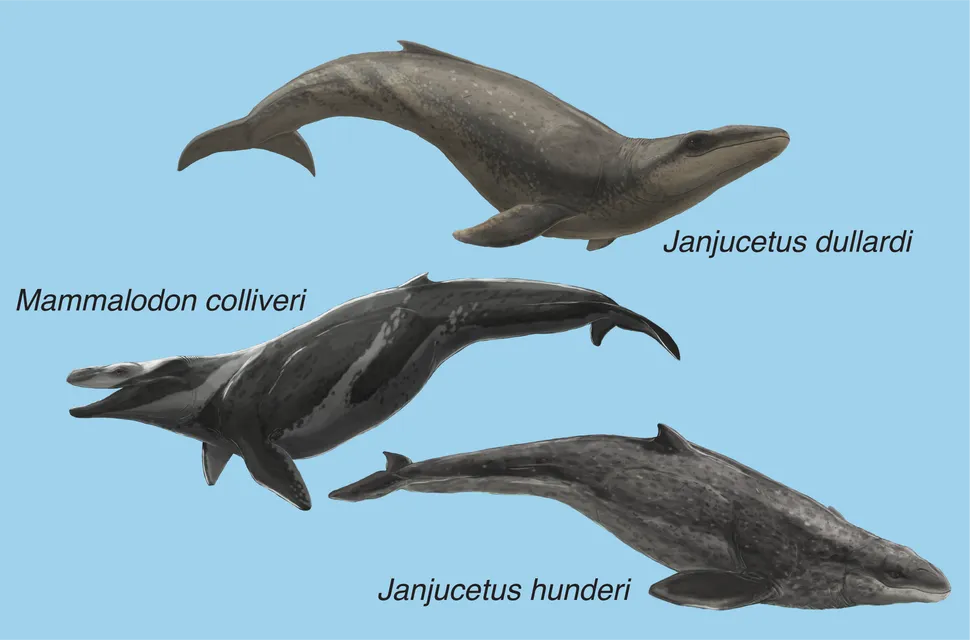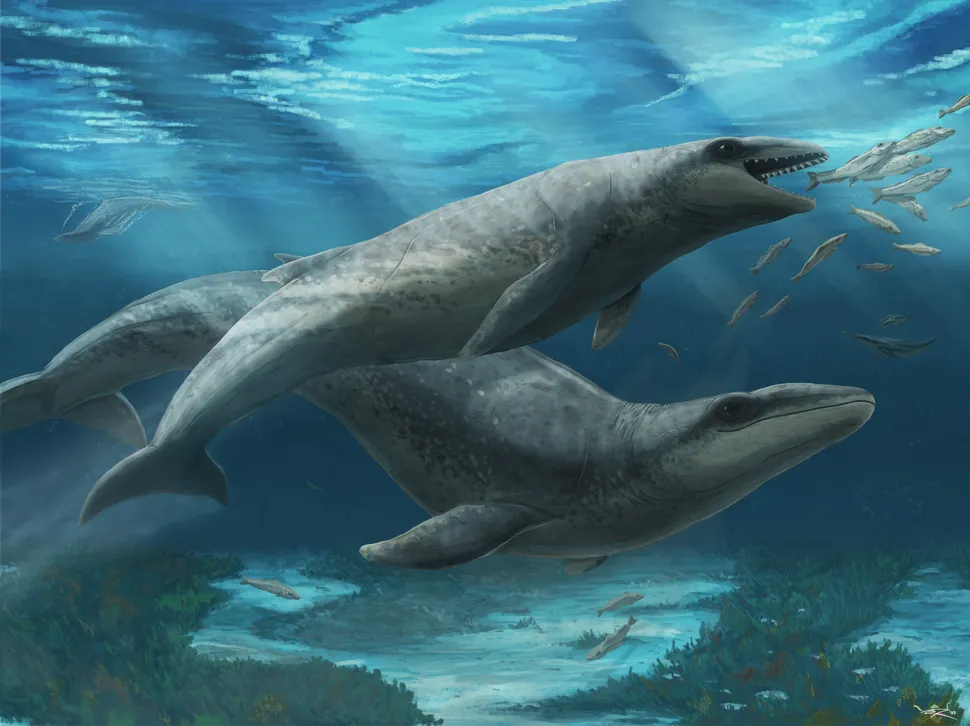Researchers have unveiled the fossils of a juvenile ancient whale that hunted off ancient Australia with large forward-facing eyes and razor-sharp teeth.
Around 26 million years ago, a swift, sharp-toothed predator roamed the warm coastal waters off Australia — a whale that, despite its endearing appearance, was anything but harmless.
Scientists have now identified this creature as Janjucetus dullardi, one of the earliest known relatives of today’s baleen whales, such as the enormous blue whale (Balaenoptera musculus). Unlike its modern filter-feeding cousins, however, this Oligocene-era whale was built for hunting, with large eyes for spotting prey and a jaw lined with slicing teeth. Measuring just over 7 feet (2.1 meters) long, it was small by whale standards, but its compact body was designed for speed and agility.
“This is essentially a shark-like version of a baleen whale — small, deceptively cute, but a capable predator,” said lead author Ruairidh Duncan, a paleontology PhD candidate at Museums Victoria Research Institute and Monash University.

J. dullardi belonged to a group of small whales called mammalodontids, which thrived in the shallow seas around Australia and New Zealand during the Oligocene Epoch, not long after early whale ancestors returned to the ocean roughly 50 million years ago.
The fossil was discovered in 2019 by school principal Ross Dullard while walking along Half Moon Bay near Melbourne. Embedded in a wave-worn rock face belonging to the Jan Juc Marl formation, the specimen turned out to be exceptionally well-preserved. Dullard donated the find to Museums Victoria, enabling researchers to unlock an entirely new chapter in whale evolution.
“This kind of public involvement is invaluable,” said senior author Erich Fitzgerald, senior curator of vertebrate paleontology at Museums Victoria. “Ross’ discovery revealed a part of whale history we’d never seen before — a reminder that major scientific breakthroughs can happen in your own backyard.”
Using photography, microCT scans, and detailed anatomical study, scientists confirmed J. dullardi as a previously unknown species. Features such as pristine, unworn teeth indicated it was a juvenile or subadult when it died.
Southeastern Australia has emerged as a hotspot for ancient whale fossils, with multiple mammalodontid species already recovered from the Jan Juc Marl. Researchers believe many more discoveries await, each shedding light on the unique evolutionary experiments that shaped whales into the giants of today.
“This region was once home to some of the most extraordinary whales in history,” Fitzgerald said. “We’ve only just begun to tell their stories.”
